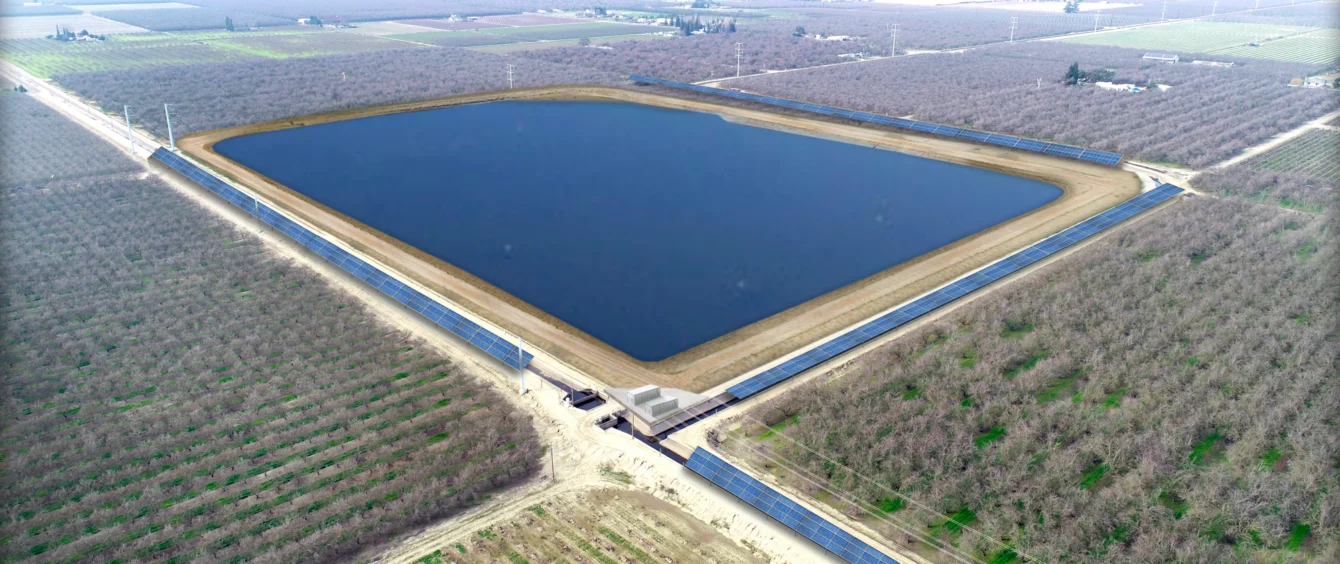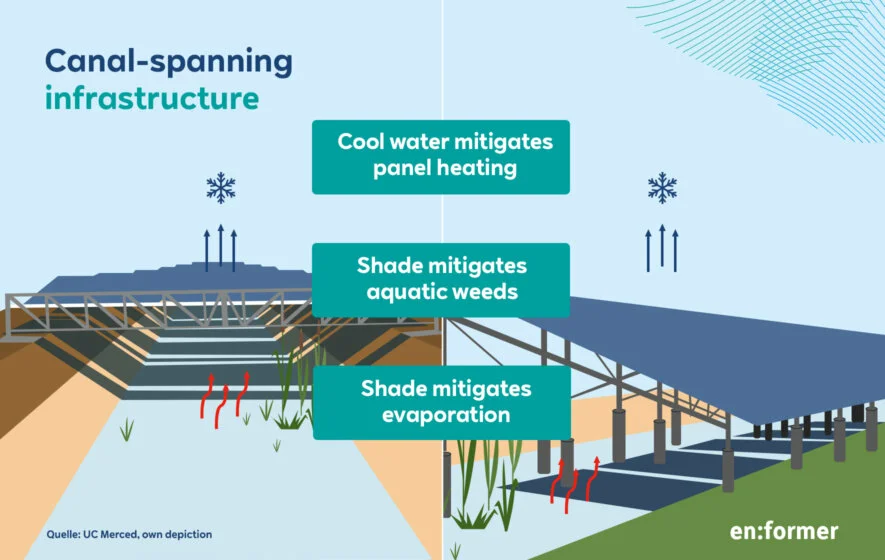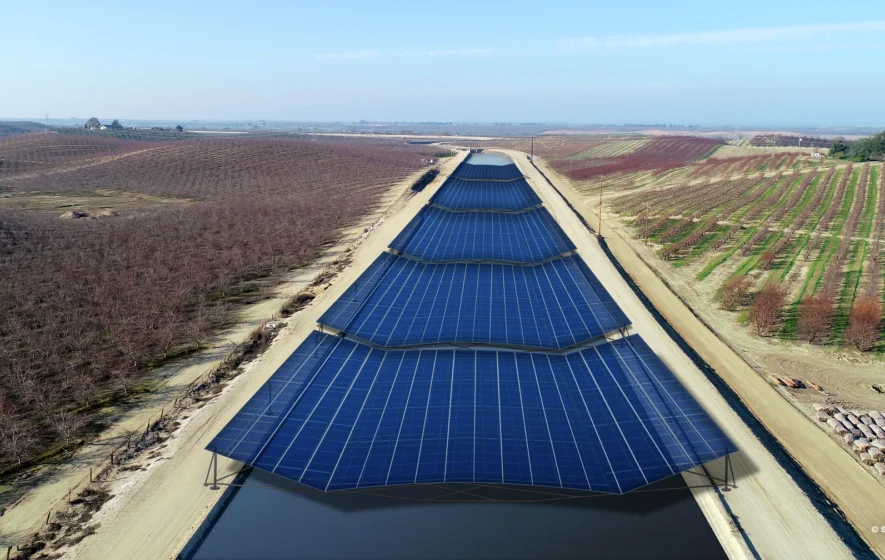Solar is the most affordable renewable source of energy. However photovoltaic installations are big space consumers. This explains the intensified search for technologies enabling solar panels to be integrated in areas used for other purposes such as buildings, farmland and lakes. Mounting solar panels on top of rivers and canals is still a fairly novel approach.
River and canal photovoltaics (PV) involve mounting solar panels over the full width of these waterways, resulting in them being covered by the panels. In addition to making efficient use of areas to generate green electricity, this type of installation has several additional advantages, as demonstrated by a study by the University of California, Merced (UC Merced).
Shade protects from evaporation
Solar systems are not the sole benefactors of this technology, as it also brings several advantages for canal infrastructure. The shade cast over waterways by the solar panels reduces evaporation, a huge problem in areas with lots of sunshine that provide ideal conditions for producing solar power, as they are often plagued by water scarcity. In turn, the canal water that flows beneath the solar panels provides better cooling than ground-mounted arrays as water heats up slower than soil. This translates into an up to three percent increase in output.
The study’s authors have identified a rise in water quality as a further advantage given that the additional shade reduces algae growth. This has the potential to lower canal maintenance costs.
Of course, every new technique comes with challenges: So far, the cost of this infrastructure exceeds that of ground-mounted PV systems. Moreover, the usable area above canals is frequently limited by maintenance work. However, the experts at UC Merced believe that the benefits outweigh the challenges.
The technology is currently being tested in various pilot projects, for example in India, Spain and California in areas with expansive canal networks and lots of sunshine contrasted by major difficulties resulting from droughts. Canal PV could be the solution.
First project launched ten years ago
The first undertaking of this kind took place on the Narmada Canal in the Indian state of Gujarat. The Asian nation boasts over 300 days of sunshine a year, providing the best possible prerequisites for harnessing the energy of the sun. In 2021, the country already had solar systems with a total capacity of 52 gigawatts (GW). Furthermore, India’s canal network is dense enough to ensure a nationwide supply of water to both the urban and rural population.
The canal PV project began in 2012, on a section near the City of Ahmedabad. A 750-metre pilot system with a capacity of one megawatt (MW) was installed by 2014. The panels were mounted on a suspended structure over the canal.
This pilot was followed by further PV projects, including a 10-MW system over a stretch of the canal’s Vadodara diversion channel. The potential it holds for the future is huge: Gujarat is home to a network of canals covering more than 80,000 kilometres. According to the Gujarat State Electricity Corporation, a total of 18 GW of electricity could be generated if solar panels were installed over just 30 percent of the canal. This would spare 90,000 hectares of land that would be needed to produce the same amount of electricity from ground-mounted arrays.
In February 2022, Sardar Sarovar Narmada Nigam Ltd (SSNNL), which owns and maintains a canal network, announced a 100-MW solar project spanning a total of 40 kilometres, which will be installed in stages at various points of the diversion channels of the Narmada River.
California: Project Nexus to protect water
The canal PV project in India served as a role model for California where this technology could also unleash substantial potential, while solving another problem: According to the US Drought Monitor, the most populous US state is faced with extremely dry weather and receding water levels.
In the 2021 study, US Merced’s research team also explored the potential of the state on the West Coast. The results are promising: If all 6,500 kilometres of California’s canals were covered with solar panels, more than 246 billion litres of water could be saved, and 15 GW of green energy could be produced every year.
The study’s findings spawned Project Nexus: Solar panels are being installed for test purposes over several sections of a canal in the Turlock Irrigation District (TID) in the San Joaquin Valley. The total planned capacity is five MW. The project involves installing various types of solar panels in order to check them for efficiency and performance. It is also envisaged that energy storage systems be integrated in the project.
Construction is set to begin in early 2023, with completion expected in 2024. The project receives financial support from the state of California and costs some 20 million US dollars.
160-MW project planned in Spain
The administration of the Spanish region of Navarra authorised a canal PV project in 2021, which is being planned by the local association of PV power producers (Aniper). The solar farm is to be erected atop the Navarra Canal, which extends over 198 kilometres, making it one of the country’s biggest artificial irrigation canals. According to the government, the project could end up with an installed capacity of up to 160 MW. The first pilot is envisaged to cover a nine-kilometre section and have a capacity of 30 MW.
If the pilots are successful, canal PV will be a promising technology, which can also be implemented in other countries within Europe and the rest of the world.


